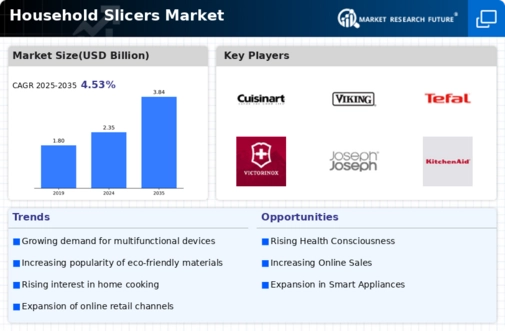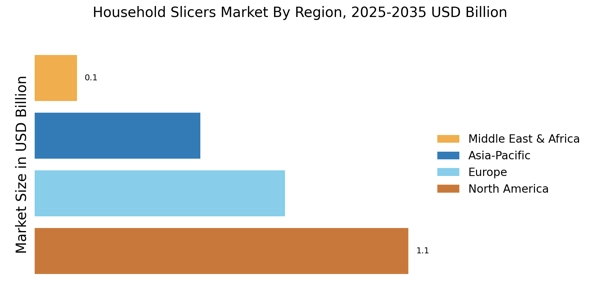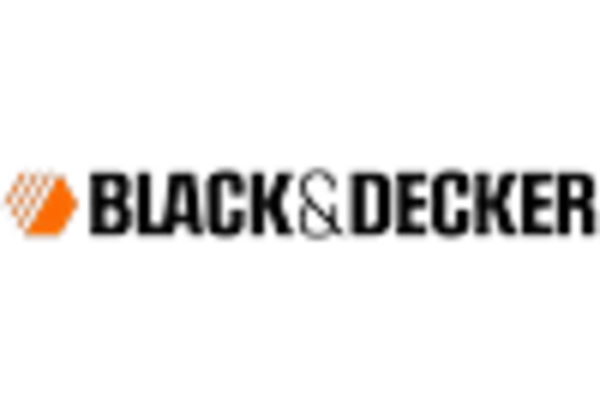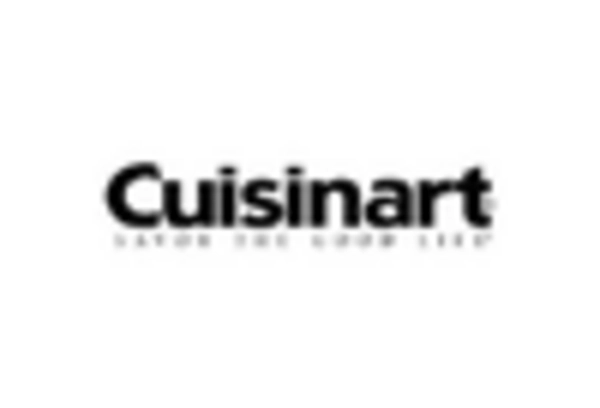Growing Interest in Home Cooking
The Household Slicers Market is significantly influenced by the increasing interest in home cooking. As culinary enthusiasts and novice cooks alike embrace the art of preparing meals at home, the demand for efficient kitchen tools, such as slicers, rises. This trend is supported by a shift towards healthier eating habits, as individuals seek to control ingredients and portion sizes. Market data indicates that the home cooking segment has expanded by approximately 7% in recent years, reflecting a broader cultural movement towards self-sufficiency in food preparation. Consequently, household slicers are becoming essential tools in the kitchens of those who prioritize quality and freshness in their meals. This growing interest not only drives sales but also encourages innovation in product design and functionality within the household slicers market.
Expansion of E-commerce Platforms
The Household Slicers Market is experiencing a transformative shift due to the expansion of e-commerce platforms. As online shopping becomes increasingly prevalent, consumers are more inclined to purchase kitchen appliances, including slicers, through digital channels. This trend is bolstered by the convenience of online shopping, which allows consumers to compare products, read reviews, and access a wider range of options. Recent statistics indicate that e-commerce sales in the kitchen appliance sector have surged by approximately 10% annually, reflecting a broader shift in consumer purchasing behavior. As a result, manufacturers are investing in online marketing strategies to reach a wider audience, thereby enhancing their market presence. The growth of e-commerce not only facilitates access to household slicers but also encourages competition among brands, ultimately benefiting consumers with more choices and better pricing.
Increased Focus on Food Presentation
The Household Slicers Market is also shaped by an increased focus on food presentation among consumers. As social media platforms proliferate, individuals are more inclined to showcase their culinary creations, leading to a heightened emphasis on aesthetics in food preparation. Slicers play a crucial role in achieving visually appealing dishes, as they allow for uniform cuts and creative plating. This trend is particularly relevant in the context of home entertaining, where presentation can significantly enhance the dining experience. Market analysis suggests that the demand for aesthetically pleasing kitchen tools, including slicers, has grown by approximately 6% in recent years. As consumers continue to prioritize the visual aspects of their meals, the household slicers market is likely to benefit from this trend, prompting manufacturers to develop products that cater to this aesthetic sensibility.
Rising Demand for Convenience Products
The Household Slicers Market experiences a notable surge in demand for convenience-oriented kitchen appliances. As consumers increasingly seek to simplify meal preparation, the appeal of household slicers becomes more pronounced. This trend is particularly evident among busy families and working professionals who prioritize efficiency in their cooking routines. According to recent data, the household slicers segment has witnessed a growth rate of approximately 5% annually, driven by the desire for quick and easy food preparation solutions. The convenience factor not only enhances the user experience but also encourages repeat purchases, thereby bolstering the overall market. As manufacturers innovate to create more user-friendly designs, the household slicers market is likely to expand further, catering to the evolving needs of modern consumers.
Innovations in Product Design and Functionality
The Household Slicers Market is significantly driven by innovations in product design and functionality. As consumer preferences evolve, manufacturers are compelled to develop slicers that offer enhanced features, such as adjustable thickness settings, ergonomic designs, and safety mechanisms. These innovations not only improve user experience but also address common concerns related to food preparation. Market data suggests that the introduction of advanced slicers has contributed to a growth rate of approximately 8% in the household slicers segment. As consumers become more discerning in their choices, the demand for high-quality, multifunctional kitchen tools is likely to increase. This trend encourages ongoing research and development within the household slicers market, as companies strive to meet the diverse needs of their customer base.


















Leave a Comment